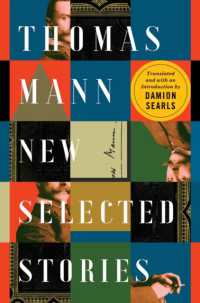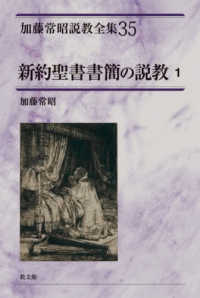- ホーム
- > 洋書
- > ドイツ書
- > Humanities, Arts & Music
- > Linguistics
- > general surveys & lexicons
Full Description
For some time already, a discourse within the field of Translation Studies has increasingly focused on the translator, his/her translation properties and mental processes resulting from their application. Recent years and advances in technology have opened up many possibilities of gaining a deeper insight into these processes. This publication presents the theoretical foundations, the results of scientific experiments, and a broad range of questions to be asked and answered by eye-tracking supported translation studies. The texts have been arranged into two thematic parts. The first part consists of texts dedicated to the theoretical foundations of Translation Studies-oriented eye-tracking research. The second part includes texts discussing the results of the experiments that were carried out.
Contents
Contents: Sambor Grucza/Monika Płużyczka/Justyna Zając: Eye-Tracking Supported Translation Studies at the University of Warsaw (Instead of Introduction) - Sambor Grucza: Heat Maps, Gaze Plots ... and What Next? The Access to Translation Competences and Translation Processes - Jerzy Żmudzki: Problems, Objectives and Challenges of the Polish Translation Studies and Theory - Marta Małachowicz: Knowledge - Transference - Translation - Ewa Zwierzchoń-Grabowska: Could Eye-Tracking Help to Reconstruct the Translation Processes? - Paweł Soluch/Adam Tarnowski: Eye-Tracking Methods and Measures - Monika Płużyczka: Eye-Tracking Supported Research Into Sight Translation. Lapsological Conclusions - Silvia Hansen-Schirra, Christoph Rosener: Proactive Use of Eye-Tracking in the Translational Workflow - Agnieszka Szarkowska/Izabela Krejtz/Krzysztof Krejtz/Andrew Duchowski: Harnessing the Potential of Eye-Tracking for Media Accessibility - Justyna Zając: Eye-Tracking Research of Business Email Reception.








